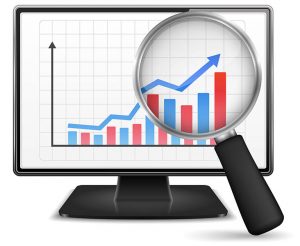Introduction Cost of Non Quality
 Do you find it difficult to get good insight in the cost of non quality in your organization? Do you often get nasty questions of senior management regarding costs? Do you struggle to show the real benefits of proper quality assurance to your senior management? And as a result do you feel stressed, undervalued and often not being heard by others in the organization?
Do you find it difficult to get good insight in the cost of non quality in your organization? Do you often get nasty questions of senior management regarding costs? Do you struggle to show the real benefits of proper quality assurance to your senior management? And as a result do you feel stressed, undervalued and often not being heard by others in the organization?
Well this is the daily life of many quality managers and one of the major underlying reasons is that they are not capable (yet) of properly making visible the costs associated with non-quality in the organization. As managers and company owners predominantly think in dollars (money) and base most (if not all) their decision on this, the modern Quality Manager needs to be able to translate everything happening in the realm of quality to money.
But how to do this? Of course there is activity based costing, but not a lot of companies are doing this to the level of detail required to get proper insight. Just talking to the finance manager will most often also not bring the final resolution and insight in the cost of non-quality. There is however a nice and simple way to gain good insight in the cost of non-quality. In this article we will explain the four steps you need to take to create define, set-up and monitor cost of non-quality in your organization.
Step 1. Engage with the right people
Very often we encounter Quality Managers who try to solve all their problems in splendid isolation. But when it comes to cost of non-quality this is exactly NOT what to do. Also just speaking to the finance manager or someone of the finance department will often not result in a very sound approach.
There are three key people that must be involved in creating a sound approach towards monitoring the cost of non-quality:
- The Finance Manager
- The Production Manager
- The Operations / Supply Chain Manager
The reason for involving the Production Manager and the Operations / Supply Chain Manager are that these departments are involved in the majority of the contributing factors to the cost of non- quality.
Next to this you must involve the managers up-front as the system you are going to create will not be accurate to the very last cent, and the last situation you want to end up in is a situation where there is continuous debate whether the cost of non-quality was determined or calculated in the right way. Hence it is important to make these three managers co-owners of your new cost of non-quality approach. Reach out to these managers explaining your intent to create a structured approach to gain insight in the cost of non-quality. During the initial meetings with each of them you can already start defining the first building blocks.
Step 2. Create a structure

Once you have the buy-in of the Finance, Production and Operations / Supply Chain Manager you can start defining the structure for measuring the cost of non-quality. As said before, most companies do not have an activity based costing structure in place to such a level of detail that insight in the cost of non-quality can simply be calculated from the company’s ERP system. Therefor you must design a structure.
The best way to do this is to organize a brainstorm session in a small group, including the three named managers and actually not too many more people. The maximum number of people should be eight. During the brainstorm session you want to list as many aspects that fall under cost of non- quality as possible. Make sure everybody is heard; the best way to do this is to individually write down all the single building blocks on one post-it each (so for each building block one post-it). Once done, put the post-it’s on a flipchart one-by-one. Everybody who has a similar post-it can the put it on top of the earlier one. This way you are sure all the building blocks are discussed and everybody owns the outcome. Allow discussion during the brainstorm session and also allow people to write additional building blocks on post-it’s during the process. This will give you a stronger tool in the end.
Once you have a complete list of building blocks you want make clusters of building blocks that typically go together. This can be done in various ways – either by department where the costs are caused or by the severity level of the costs (e.g. not right first time production, complaints, sever issues, product recalls). The most important thing here is that everybody agrees to the clusters you define together.
Step 3. Calculate the typical costs

Now you have all the building blocks of the cost of non-quality model defined, you need to establish how exactly these costs can be calculated. If you do not bring some common sense to the table at this point in time you will soon find yourself in a situation creating very elaborate costing models for each of the buildings blocks. This will bring you to a full activity based costing situation, which is too much effort and usually way too expensive to pursue.
The best way forward is to define a “standard” cost associated with each of your building blocks. As an example let’s assume you have taken non-urgent product complaints as one of the building blocks. The way to come to a standard cost is to look at the last year and make an as good as possible estimate on all the costs that were involved in non-urgent product complaints. These could be, but are not limited to: return shipment costs, customer re-imbursement costs, investigation costs, travel costs made in relation to the complaint, costs of rework, down grading or scrapping of returned product.
Once you have created an overview of last year’s costs for each of the building blocks, you can calculate a standard cost per occurrence. If we stick to the example, you might find that the average cost of a non-urgent product complaint amounts to $15.000. This means that you simply have to multiply the number of non-urgent product complaints in a period with the amount of $15.000 to get a pretty accurate indication of the cost associated with this building block.
Step 4. Monitoring
 The final step is to define a clear monitoring structure for each of the building blocks in each of the clusters. In order to reach this there are three crucial things you need to establish:
The final step is to define a clear monitoring structure for each of the building blocks in each of the clusters. In order to reach this there are three crucial things you need to establish:
- You want to define who is responsible for delivering the information on the number of occurrences to you for each of the building blocks. Very often you will find that it will not be you as a quality manager, but staff members in the production and operations / supply chain department who have access to that information. Hence you want to make these people responsible for reporting this on a regular basis.
- Next to making people responsible, you want to make the managers of the respective departments accountable for getting the right information to you on time. As you have involved these managers from the onset in this approach, this should not be too difficult to achieve.
- You want to define an easy to use reporting structure where people only need to fill in the number of occurrences and all the necessary calculations are performed automatically. This way you create a system which is not only simple to use, but also has less errors in it. You will find that some of the calculations you need to perform to get to the exact costs of a building block might be quite complex. So automating these calculations in an Excel spreadsheet is a wise thing to do.
If you would like to see a PDF of a typical overview, including all the building blocks and the responsible staff members for collecting the base data on a monthly basis, have a look at our template for cost of non-quality.
